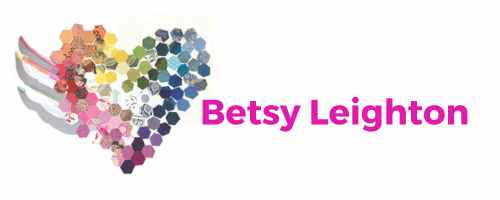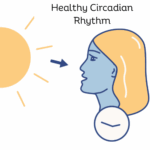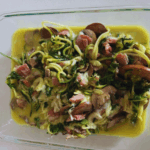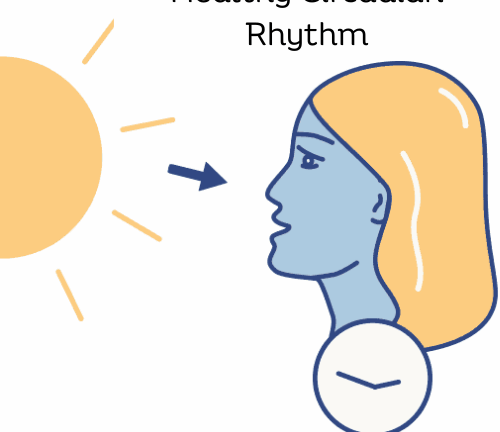This post discusses circadian hygiene and how it is important for everyone, especially those with chronic illness.
As an Amazon Associate, I earn from qualifying purchases.
Table of Contents
What is MCAS?
Mast Cell Activation Syndrome (MCAS) is a chronic condition that affects all organ systems. It can cause severe, disabling symptoms every day, including potentially fatal anaphylaxis. MCAS often occurs with other chronic conditions like Ehlers-Danlos Syndrome (EDS) and Postural Orthostatic Tachycardia Syndrome (POTS). Managing MCAS is challenging because many healthcare providers are unaware of it, and diagnostic tests can be unreliable. Treatments involve using antihistamines, mast cell stabilizers, and avoiding triggers. Check out this post on how to manage MCAS.
What is circadian hygiene?
Circadian hygiene refers to practices and lifestyle habits that help maintain a healthy circadian rhythm—your body’s internal 24-hour clock that regulates sleep, wakefulness, hormone release, body temperature, and other biological functions.
Good circadian hygiene supports overall physical and mental health, and poor habits can disrupt your rhythm, leading to issues like insomnia, fatigue, depression, and metabolic disorders.
Key principles of circadian hygiene
The keys to circadian hygiene are:
- Consistent sleep schedule: Go to bed and wake up at the same time every day, even on weekends.
- Morning light exposure: Get bright, natural light in the first hour after waking to help sync your internal clock with the sun.
- Avoid bright light at night: Limit exposure to screens and artificial lights in the evening, especially blue light, which suppresses melatonin.
- Limit caffeine and alcohol: Avoid these in the hours leading up to bedtime, as they can disrupt sleep cycles.
- Regular meals: Eat at consistent times and avoid heavy meals close to bedtime—food timing can influence your circadian rhythm.
- Physical activity: Exercise during the day (preferably earlier) to support better sleep and circadian function
The bucket theory
The bucket theory simplifies understanding symptom reactions with MCAS. Imagine your body as an empty bucket you don’t want to overflow. Reactions to various stimuli fill the histamine bucket at different rates, forming the total histamine level (how full your bucket is). More histamine means more symptoms. By managing triggers, reducing exposures, and taking medications and supplements, you can control your bucket’s level.
Know your typical symptom progression
Knowing your symptom progression in a symptom flare is the key to developing your rescue plan. This post discusses how to recognize your symptom progression so you can be prepared to address those symptoms.
Get my free ebook, symptom log, and meal plan!
Want a tool to easily keep track of your symptoms? Sign up for my newsletter and you will receive my free 50-page ebook of lower-histamine, grain-free, sugar-free recipes, my free symptom log, and a free two-week meal plan!
The benefits of sunlight
You’ve probably heard that sunlight hitting the skin is necessary for your body to produce vitamin D. This is pretty common knowledge and is often considered one of the main benefits of sun exposure. However, you gain additional advantages for circadian health when sunlight touches your skin, beyond just vitamin D.
Sunlight hitting the skin has been shown to reduce the incidence of serious health issues such as heart disease, cancer, stroke, Alzheimer’s disease, and diabetes. These conditions rank among the top ten leading causes of death.
Exposure to sunlight has been shown to reduce the risk of all-cause mortality. This means that the more sunlight we get on our skin, the less likely we are to die from any cause. It was a radical idea for me to accept that the sun is not our enemy; it is not out to harm us.
When used appropriately, sunlight can provide tremendous benefits for our health and longevity. Studies indicate that the positive effects of sunlight on our skin, especially for cardiovascular health, cancer prevention, and immune system support, are not solely linked to the amount of vitamin D we produce.
Making vitamin D
Making vitamin D from the sun is important for our health. But, studies have shown that when you supplement with vitamin D3, you do not experience the same reductions in all-cause mortality as those who get vitamin D through sunlight exposure. This suggests that the process of synthesizing vitamin D via sunlight is more effective. Also, there are other benefits associated with sunlight exposure that contribute to lowering all-cause mortality.
It’s important to understand that we can only produce vitamin D at certain times of the day and year. This production occurs when ultraviolet B (UVB) light is present in our environment. UVB light penetrates the atmosphere when the sun is at least 30 degrees above the horizon.
Where I live, in Minnesota, there are times throughout the year when the sun does not rise above 30 degrees on the horizon. This means that from the end of November to the end of January, I am unable to produce vitamin D through my skin. Despite this, I still make it a point to go outside during this time of the year. Being outdoors has its benefits, particularly in helping to regulate my circadian rhythm, even though I can’t synthesize vitamin D during these months.
So, how can you tell if the sun is 30 degrees above the horizon? There are two ways to find out if UVB light is available in your environment. One option is to use an app like the Circadian Life app, which indicates whether UVB light is present in your area. It’s also important to keep in mind that the ultraviolet index must be strong enough for the UVB light to reach your skin and start the conversion of cholesterol into vitamin D.
The effects of UV exposure are most significant when the UV index is three or higher. You can use apps like the Weather Channel app to monitor the UV index in your area. Or, an app called DMinder helps you determine your optimal UVB exposure time. It automatically pulls in weather reports based on your location and provides information on the ultraviolet index.
UVB
During the summer, the UV index is typically above three, and there’s a significant amount of UVB light in my environment. Because of this, I try to take advantage of quick sun exposure. If I have 5-20 minutes, I go outside and lie out to produce vitamin D through my skin. This process of synthesizing vitamin D in the skin is crucial because, as I mentioned, research indicates that our bodies cannot utilize vitamin D supplements as effectively as they can produce it naturally.
Vitamin D acts like a secosteroid hormone. We produce this valuable hormone in our skin, but during this process, we also generate a variety of metabolites. Recent research suggests that these metabolites, including tachysterol and lumisterol, are just as important for our health as vitamin D itself.
Vitamin D is a biologically important molecule to have, and supplementing with vitamin D3 does not compare to what our bodies can produce through skin exposure to sunlight. The health benefits we receive from natural sunlight are extensive. Additionally, our bodies gradually adapt to increased levels of UVB exposure, which is part of a broader category of ultraviolet exposure.
To promote vitamin D production, try to get about five to thirty minutes of sun exposure several times a week, depending on your skin’s tolerance. Look for an erythema response (a reddening of the skin) as a sign that you’re getting enough sun.
If you consistently spend time outdoors from spring through summer and into early fall, you will reap all the benefits of making vitamin D during those warmer months. Your body can store vitamin D and last you through the winter months, even when it’s not present in your bloodstream. It is stored in your liver and every single one of your cells.
Other helpful frequencies of light from the sun
At sunrise, we begin to activate our circadian rhythm, benefiting from blue light, the colors of the rainbow, and infrared light. When the sun reaches 10 degrees above the horizon, ultraviolet A (UVA) becomes present. This means that a significant portion of the day features UVA as soon as the sun is above 10 degrees in the sky.
Just before sunset, when the light drops below a specific level, we can experience significant benefits for cardiovascular health if UVA rays hit our skin. UVA light causes blood vessels to widen, a process known as vasodilation, which brings them closer to the skin’s surface. This effect occurs because our blood contains components called chromophores, which are responsible for absorbing light.
The blood essentially rises to the surface of the skin to absorb sunlight, allowing us to transport light through our circulatory system to the rest of our body. Additionally, when we experience vasodilation, we naturally lower our blood pressure.
In the spring, summer, and fall, blood pressure tends to be well-regulated. However, in colder climates such as Michigan, Minnesota, or New York, where there’s limited opportunity for making vitamin D during the winter, blood pressure is affected and might not be as stable. During the summer months, blood pressure is beautifully maintained because you spend time outdoors, receiving sunlight on your skin, which helps to dilate blood vessels and naturally lower blood pressure.
One of the primary reasons sunlight benefits cardiovascular health is that it helps the body produce vitamin D and nitric oxide. Nitric oxide dilates blood vessels, lowers blood pressure, and improves blood flow. This enhanced blood flow facilitates the delivery of nutrients to all of our active cells.
Immune health
Sunlight striking the skin provides significant benefits for our immune health as well, extending beyond just cardiovascular health. One notable advantage is the positive impact of sunlight on cancer outcomes. Research suggests that exposure to sunlight can lead to improvements in various types of cancer outcomes, highlighting the importance of sunlight for overall health. Additionally, sunlight helps enhance the removal of waste from our cells, which is also crucial for maintaining our well-being.
Research indicates that even in cases of skin cancer, increased sun exposure can enhance outcomes and potentially extend life expectancy. This positive effect is not limited to skin cancer; it has also been observed in other types of cancer, including breast cancer, prostate cancer, colorectal cancer, and lung cancer.
Research suggests that we are much less likely to develop various types of cancer with increased sun exposure. Moreover, if we do develop cancer, having had more sun exposure may lead to better outcomes.
Rethinking our relationship with the sun
I believe we are misinterpreting the risks associated with sunlight. There is emerging evidence indicating that insufficient sun exposure should be considered a risk factor for conditions such as breast cancer. Colorectal cancer, cardiovascular disease, metabolic syndrome, multiple sclerosis, Alzheimer’s disease, autism, asthma, type 1 diabetes, and even myopia are all health concerns that can be affected by vitamin D levels. While vitamin D supplementation can be beneficial, it doesn’t have the same impact as natural sun exposure on the skin. I hope this information encourages and empowers you to make informed decisions about our health.
As you expose your skin to sunlight, you naturally derive various health benefits that your body needs. There’s an important aspect of what some call “quantum biology” where the melanin in our skin plays a crucial role. A researcher named Arturo Solis Herrera has shown that anytime the melanin molecule in our skin interacts with light, it creates interesting effects.
Sunlight provides our bodies with free energy in the form of molecular hydrogen and molecular oxygen, which act as electron donors. This means we can derive energy from sunlight thanks to the role of melanin, which helps create these free electrons. Additionally, when the infrared range of sunlight strikes our skin, it enhances this energy absorption process.
We have a remarkable form of water inside our bodies known as exclusion zone (EZ) water. When infrared light strikes our skin, it charges and increases the amount of EZ water we have. EZ water serves as a source of energy that our cells use to thrive and carry out their various functions.
It is a misconception to believe that we can only obtain energy from food. While food certainly plays a role, there are various other sources of energy available to us. By maximizing these additional sources, our bodies can maintain adequate energy levels to heal when necessary and, ultimately, to thrive.
I hope this encourages you to reflect on your relationship with sunlight and its effects on your skin. When we utilize sunlight effectively and capitalize on its healing benefits during spring, summer, and fall, it can have a significant impact on overall health and longevity, ultimately reducing all-cause mortality and improving health outcomes.
Check out these circadian health tools!
I’m an affiliate with Bon Charge, a company that makes tools for circadian health, and you can receive 15% off your order with my coupon code BETSYL.
Bon Charge offers tools such as yellow and red-tone blue-blocking glasses, red light therapy devices, PEMF mats, infrared saunas, and EMF blocking products.
Sign up for the SSP!
If you are dealing with chronic illness, concussions, or trauma, the Safe and Sound Protocol (SSP) is a listening therapy based on Polyvagal Theory that helps heal nervous system dysregulation. Many people with MCAS and other chronic conditions have nervous system dysregulation stemming from infections, toxic exposures, concussions, and trauma. The SSP is an easy-to-use app where you listen to specially filtered music for 30 minutes each day for a 5-hour cycle. Studies show the SSP has a profound effect on mental health and chronic conditions
You can sign up for the SSP here!
Heal your mind!
While the SSP is a bottom-up or somatic therapy for healing the nervous system, the Sacred Self-Healing Method I offer is a top-down nervous system healing modality that focuses on cognition, attention, perception, and emotion, using the mind’s higher functions. The SSP and the Sacred Self-Healing Method complement each other and together produce lasting results.
I provide one-on-one in-person and remote chronic illness and caregiver coaching and Sacred Self-Healing Sessions based on the Sacred Self-Healing Method, a proven novel co-creative healing modality detailed in my Books.
Click here for more information.
Order my books!
Rocks and Roots chronicles my journey solo backpacking the Superior Hiking Trail and overcoming nervous system dysregulation, gut dysbiosis, and Mast Cell Activation Syndrome symptoms to hike 328 miles successfully.
The Sacred Self-Healing Method ebook is available here and in most ebook retailers!
The Sacred Self-Healing Workbook is available for purchase here!
Betsy’s first book, Sacred Self-Healing: Finding Peace Through Forgiveness, is available here
Companion Recordings
The companion audio recordings of chants, guided meditations, and sound healing demonstrations that accompany Sacred Self-Healing: Finding Peace Through Forgiveness are available to download for free here
What do you think?
I’d love to have your reply below!
Disclaimer
The preceding material does not constitute medical advice. This information is for information purposes only and is not intended to be a substitute for professional medical advice, diagnosis, cure or treatment. Always seek advice from your medical doctor.



